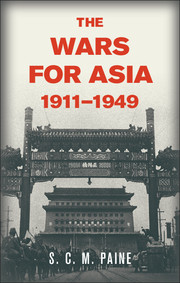2 - Japan 1931–1936
The Containment of Russia and National Restoration
Published online by Cambridge University Press: 05 September 2012
Summary
順水推舟
Push a boat with the current.
(Take advantage of circumstances.)On 18 September 1931 Japan launched a full-scale invasion of Manchuria in response to an explosion near Shenyang, bending a few meters of its railway track, which it repaired by 6 a.m. the following day. Both the Chinese and Japanese call this event the Manchurian Incident. Although the Japanese government accused the Chinese of perpetrating the vandalism, before long its own internal investigation held members of the Japanese army responsible. And although the Manchurian warlord, Zhang Xueliang, ordered his troops to offer no resistance and Chiang Kai-shek declined to offer any assistance, the Japanese invasion continued apace. On 19 September, Japanese forces took Shenyang, the provincial capital of Liaoning and the historical capital of Manchuria, known as Mukden. Liaoning together with Jilin and Heilongjiang Provinces constituted Manchuria. On 20 September, the Japanese took Changchun, the junction between the Japanese-owned and Russian-owned railway systems, and on 22 September they occupied the provincial capital of Jilin, unimaginatively called Jilin City. After the 8 October bombing of Jinzhou, Liaoning, the location of the government in exile of Zhang Xueliang, the international press excoriated Japan for conducting the first urban aerial bombings since World War I. The city did not fall until 3 January 1932.
- Type
- Chapter
- Information
- The Wars for Asia, 1911–1949 , pp. 12 - 47Publisher: Cambridge University PressPrint publication year: 2012



